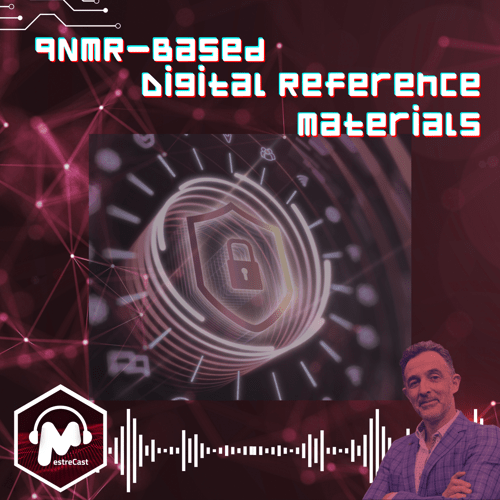
Welcome to the 6th episode of MestreCast, where we delve into qNMR-Based Digital Reference Materials. Join host Santi Dominguez, CEO of Mestrelab Research, as he sits down with Ben Shapiro, Director of Digital Product Development at the United States Pharmacopeia (USP). Together, they explore the exciting collaboration between USP and Mestrelab, known as USP-ID, focusing on advancing qNMR methodologies. Discover how this innovative partnership aims to redefine standards in digital reference materials, ensuring accuracy and reliability in scientific research and manufacturing. Tune in to gain insights into the future of analytical chemistry and the transformative impact of qNMR in regulatory and industrial settings.
Join us for an in-depth exploration of the groundbreaking collaboration between USP and Mestrelab in our latest MestreCast episode. Discover how qNMR-based digital reference materials and the innovative USP-ID software are revolutionizing quality standards and streamlining pharmaceutical testing.
Explore the transformative impact of qNMR technology on scientific research and regulatory practices. Don’t miss this insightful discussion on the future of analytical chemistry and digital innovation in the industry.
Additional Resources

If you enjoyed this conversation and are curious about the innovative collaboration between Mestrelab and USP, click here to explore the capabilities of USP-ID and Mestrelab. Discover how these technologies are reshaping the landscape of NMR with functionalities that are truly groundbreaking, especially in overcoming the complexities traditionally associated with this technique. Don’t miss out on exploring the future of analytical chemistry with us!

00:00:00 – Intro
00:01:04 – What does USP do and why is it important?
00:05:42 – Why is digitizing USP reference standards important and why are we doing it now?
00:11:09 – You mentioned challenges with delivering standards. What are they, and how can digital help?
00:21:01 – What are the future prospects for digital standards and the USP-Mestrelab collaboration?
00:24:00 – How have standards evolved, and why is technological accessibility important?
00:10:45 – Could you elaborate on the synergies that SciY aims to create among its member companies?
00:27:00 – Conclusion and final remarks
Guest Speaker
 Ben ShapiroDirector of Digital Product DevelopmentUSP
Ben ShapiroDirector of Digital Product DevelopmentUSP
Presenter
 Santi DominguezCEOMestrelab Research
Santi DominguezCEOMestrelab Research